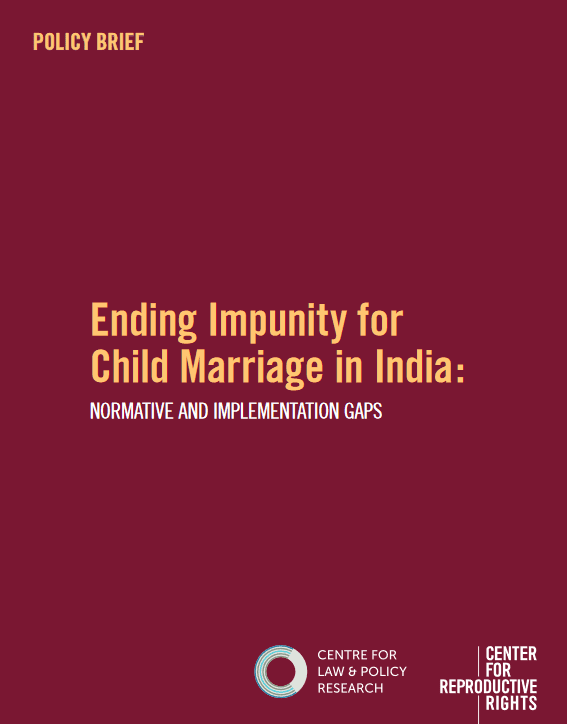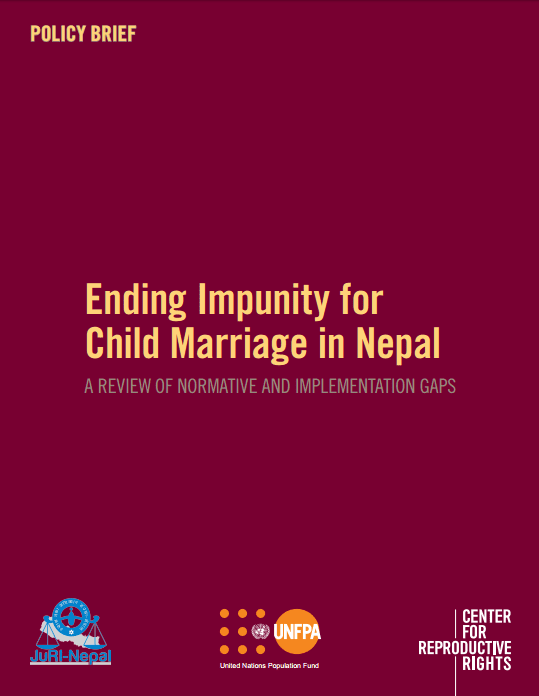Ensuring the Reproductive Rights of Adolescents
February 1999 Who Are Adolescents? ,
DEFINING ADOLESCENCE
Adolescence is a period of rapid physical, emotional, social, and sexual maturing. Adolescents need a full range of quality reproductive health care and information. But, governments tend to either ignore adolescent health issues or consider them indistinguishable from childhood concerns. Adolescents’ rights to reproductive health care were first recognized internationally in the 1989 Convention on the Rights of the Child. Governments around the world have moved to promote adolescents’ rights through international instruments and documents, such as the International Convention on Population and Development. However significant these strides, much remains to be done.
ACCESS TO REPRODUCTIVE HEALTH CARE In Asia, the Middle East and North Africa, 48% of women have marital intercourse by age 20. In the U.S., 63% of women are sexually active by age 18. A fundamental aspect of reproductive rights is access to the highest standard of sexual and reproductive health and information. Very few countries in the world have adequate reproductive health care services for adolescents. Governments should remove all legal and regulatory barriers to reproductive health care and create comprehensive, age-specific health programs. EDUCATION In sub-Saharan Africa, approximately 50% of girls receive at least 7 years of education. This figure is as low as 10% in Burundi, Mali, Niger and the Central African Republic. Under international documents, governments have the obligation to affirm the human right to education, free from gender discrimination. A key condition to fulfilling the right to reproductive health is education. Studies have shown that educated women around the world have a greater say in their reproductive lives than those with little education. Governments should develop sex education and life-skills programs for all levels of education and enact laws to make primary school attendance mandatory for both sexes. EARLY MARRIAGE Between 20-40% of women enter into their first union before 18 years in Latin America and the Caribbean, 30% in the Middle East and North Africa, as high as 50% in Yemen. International human rights instruments provide that marriage shall be entered into only with the free and full consent of each spouse, and both should be of full or marriageable age. Early marriage negatively affects the full development of adolescent girls in education, economic autonomy, and physical and psychological health. Governments should enforce laws on minimum age of marriage and enact laws to ensure consent of both parties. EARLY CHILDBEARING AND CONTRACEPTION Roughly 10% of all births in the world are attributable to adolescents. Every year, approximately 14 million young women become mothers. The internationally recognized human right to decide freely and responsibly the number, spacing and timing of one’s children lies at the core of all individuals’ right to access contraception. Because adolescents are not physiologically mature enough for childbearing, early childbearing results in high levels of maternal mortality and morbidity. Risks include hemorrhage, anemia, malnutrition, delayed or obstructed labor, low birth weight, and death for the mother or infant. Due to the high level of unplanned pregnancies among adolescents, one of the best ways to prevent pregnancy is to enhance contraceptive use. Governments should provide universal access to contraceptive information and services, as well as pre- and post- natal care for adolescents, irrespective of marital status. UNSAFE ABORTION Between 1-4 million adolescent women in Southern nations obtain clandestine, usually unsafe, abortions. Restrictive abortion laws violate women’s reproductive rights, including the right to health, life, liberty, security, privacy, and freedom from gender discrimination. Lack of safe, legal abortion services jeopardizes adolescent health and undermines their right to make decisions concerning childbearing. Adolescents worldwide are disproportionately victims of unsafe abortions because they have the least access to quality, confidential reproductive health services and information, including contraception. Adolescents are also less likely to have the social contacts, access to transportation, and financial means to obtain a safe abortion. To address unsafe abortion, governments should consider enacting laws that permit abortion without restriction as to reason or on broad grounds. HIV/AIDS AND OTHER STIs Of the 30 million people living with HIV in 1998, at least one-third are aged 10-24, with 2.6 million new infections each year. That is five new infections every minute. Adolescents’ human rights to life, health, and reproductive health are severely compromised when governments fail to comprehensively address HIV/AIDS and other STIs. Adolescent women are more vulnerable to HIV/AIDS and STIs than their male counterparts. This increased vulnerability is attributable to factors beyond their control, such as sexual violence and exploitation, lack of formal education – including sex education – and lack of access to contraception and reproductive health services. Governments should develop compassionate, non-discriminatory HIV/AIDS -related campaigns for AIDS prevention for adolescents. SEXUAL VIOLENCE Globally, 40-47% of sexual assaults is against adolescents 15 years and younger. International conventions unequivocally recognize sexual violence against adolescents as a severe human rights violation. This includes rape, sexual assault, incest, commercial sexual exploitation, and sexual slavery. Governments have an obligation to undertake strong measures to protect adolescents from sexual violence with harsh penalties for offenders. FEMALE GENITAL MUTILATION The worldwide prevalence of FGM is about 130 million women, with an additional 2 million girls and women undergoing the procedure every year. Female genital mutilation (FGM) violates human rights of girls and women. Since it involves the removal of healthy sexual organs without medical necessity and is usually performed on adolescents and girls, often with harmful physical and psychological consequences, it violates children’s rights and the right to health and bodily integrity. Although FGM is not undertaken with the intention of harming, the harmful effects it causes make FGM an act of violence. Governments should pursue an integrated approach toward the elimination of FGM by implementing appropriate education and health programs and by penalizing practitioners.


